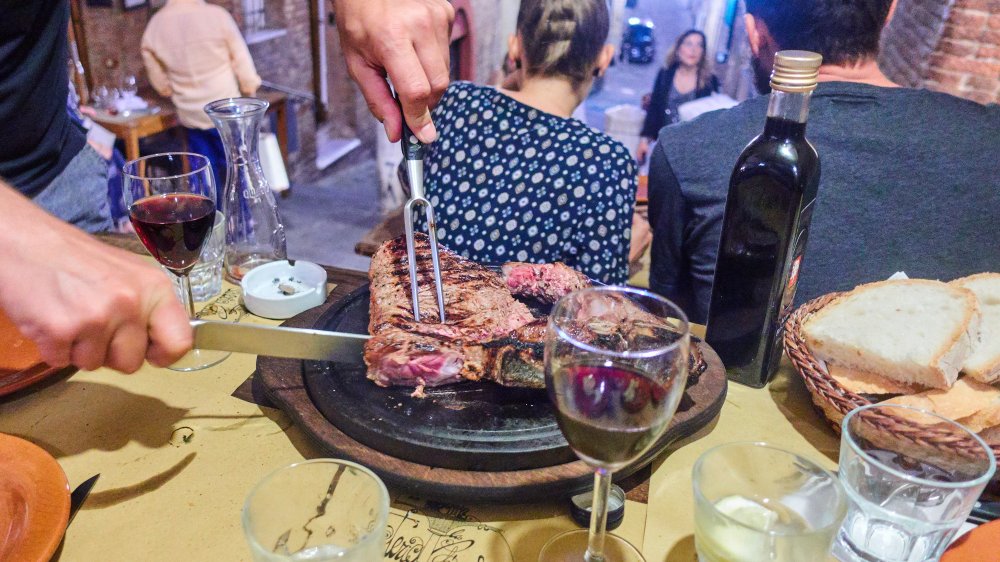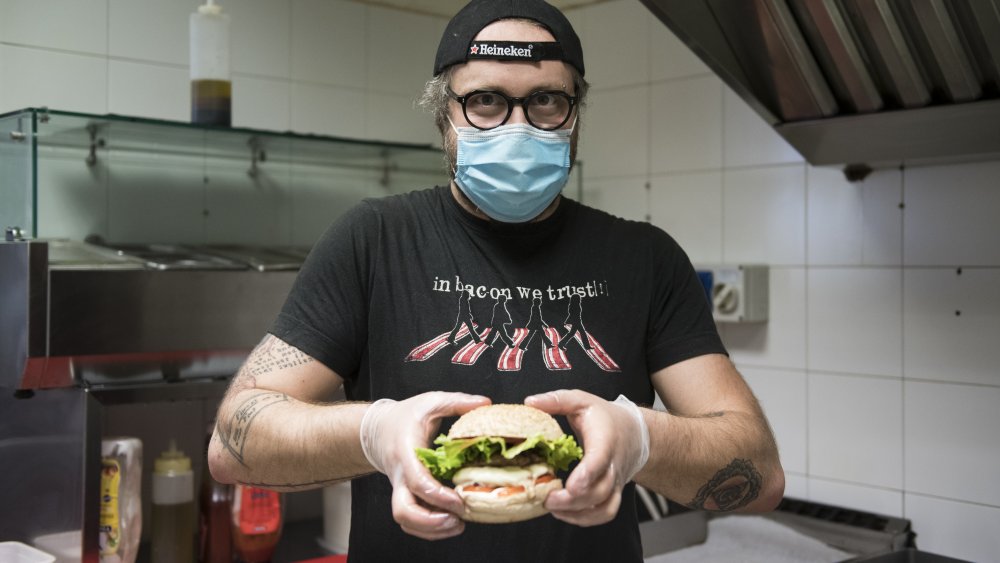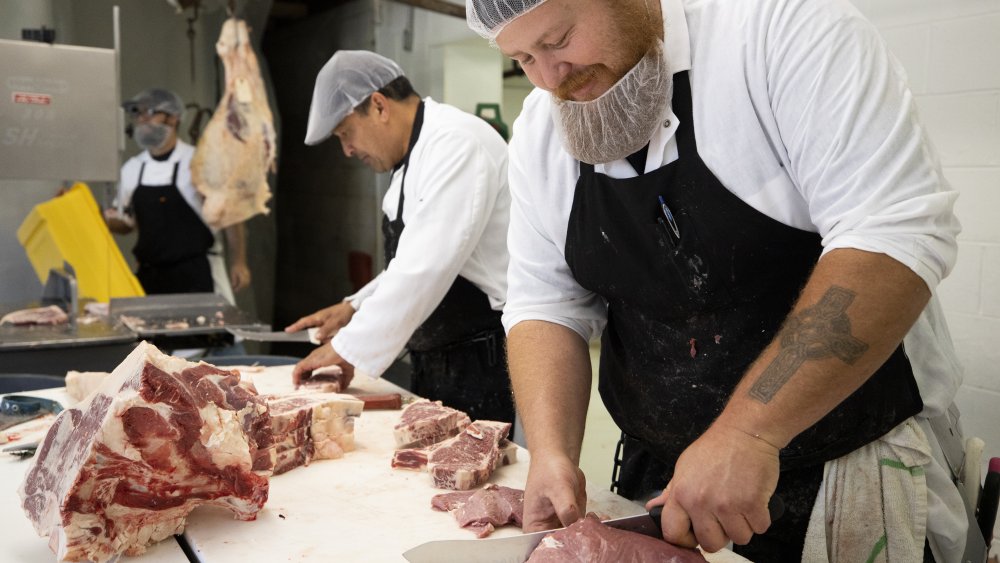The Reason Meat At Restaurants Is Going To Be Way More Expensive
People returning to restaurants as COVID-19 restrictions ease across the United States may find that their favorite hamburger or steak costs more than they remember — if it's on the menu at all. Restaurants that were stocking up in May, in preparation for a return to business, saw a 38 percent spike in food prices compared to February, according to an analysis by food-industry consultant Buyers Edge Platform (via Business Insider). Much of the increase was due to extreme increases in meat costs: 87 percent for beef cuts, 81 percent for fresh burger patties, and 70 percent for pork cuts. Chicken saw a relatively modest 23 percent increase, according to the analysis.
Over the next month or so, restaurants will have a decision to make — raise their prices or eliminate costly meat dishes from their menus, Buyers Edge Platform CEO John Davie told Business Insider. Some restaurants have already decided. As she was preparing for June 8, which was the official restaurant reopening day in Michigan, the owner of Rincon Tropical restaurant in Detroit told Detroit Eater her beef costs had more than doubled since before the pandemic. She raised prices temporarily while absorbing some of the extra costs herself.
Some restaurants take meat off the menu after price hikes
The owner of Brooks' Sandwich House in Charlotte, North Carolina, witnessed what might have been the peak of the beef price spike. He told The Charlotte Observer the price went from $2.40 a pound, on May 4, to $5.50 a pound just one week later. Owner David Brooks responded with a relatively modest increase in the price of a cheeseburger, from $4.25 to $5.20. The price increase is temporary, Brooks said, adding that he had only other choice: permanently close the 47-year-old restaurant.
Other restaurants have scaled down their menus in response to the price increases. Brisket is off the menu at some chains, according to Davie. Max's Bistro in Fresno, California took its short rib off the menu because the price for that relatively cheap cut of steak went up $2 a pound (via GV Wire). Beef prices overall increased 30 percent for the California eatery.
Price increases stem from COVID-19 hitting meat processors
Fast-food restaurants don't appear to be raising burger or burrito prices yet. If anything, they're heading in the other direction, offering lower prices and more value meals (via Business Insider). Subway may launch a two-for-$10 footlong offer in June, against the wishes of most of its franchisees (via Restaurant Business). Wendy's has revamped its $5 deals to be chicken-only (via Chewboom) in the wake of fresh-beef shortages that limited what some Wendy's outlets could offer (via MarketWatch).
The rising cost of meat at restaurants resulted from disruptions in the supply chain. Dozens of meat processors across the U.S. closed temporarily, as COVID-19 infected thousands of employees who worked without social distancing or adequate personal protection. By mid-April, some plants were erecting barriers between employees and providing them with facemasks (via USA Today). Still, the number of cases and deaths has climbed. As of June 9, more than 24,000 COVID-19 cases have been linked to meat processing plants, with at least 88 workers dying from the disease (via Investigate Midwest). Meat production, however, rebounded somewhat after April 28, when President Donald Trump ordered facilities to stay open as essential businesses, according to USA Today.


